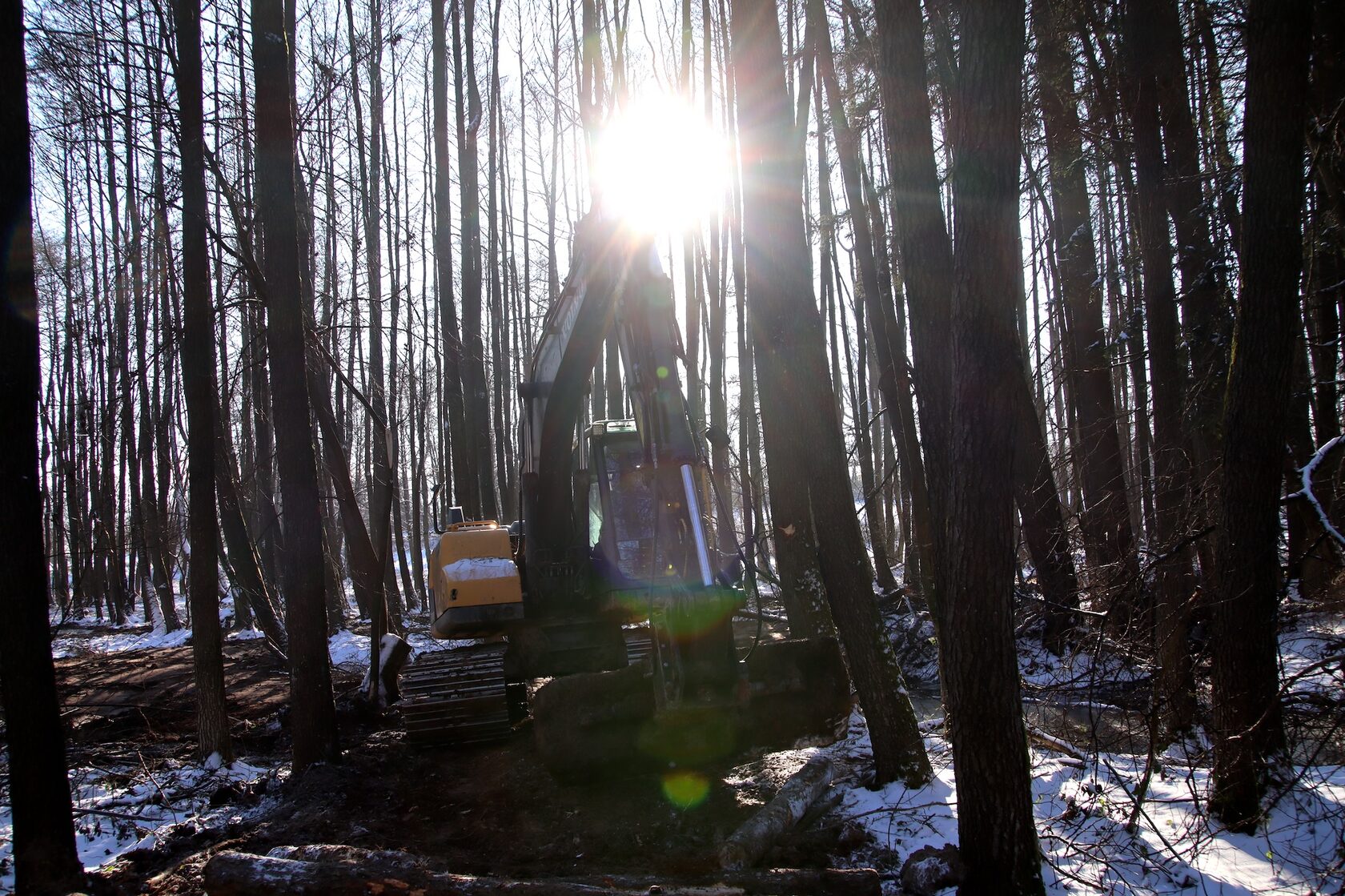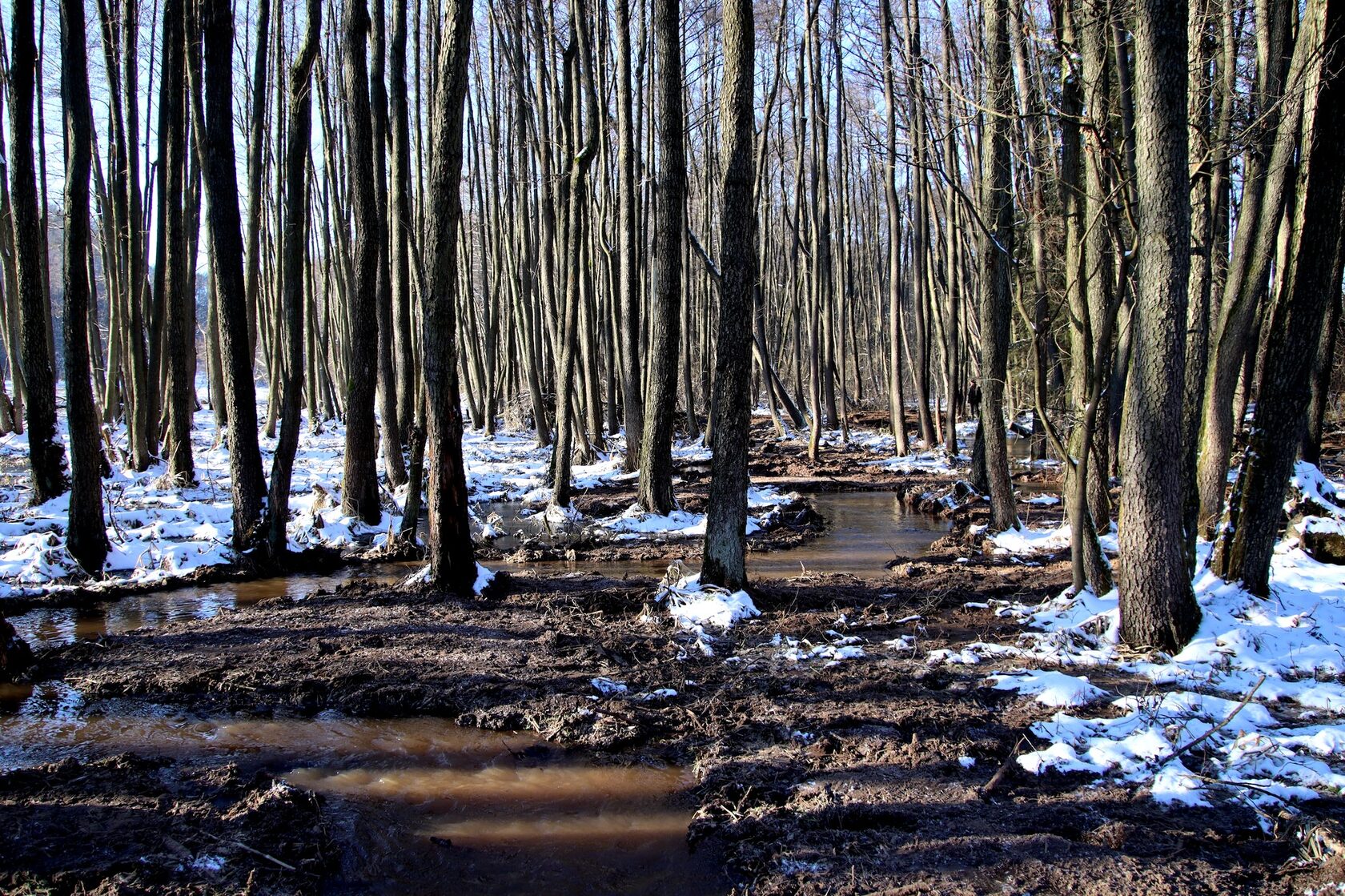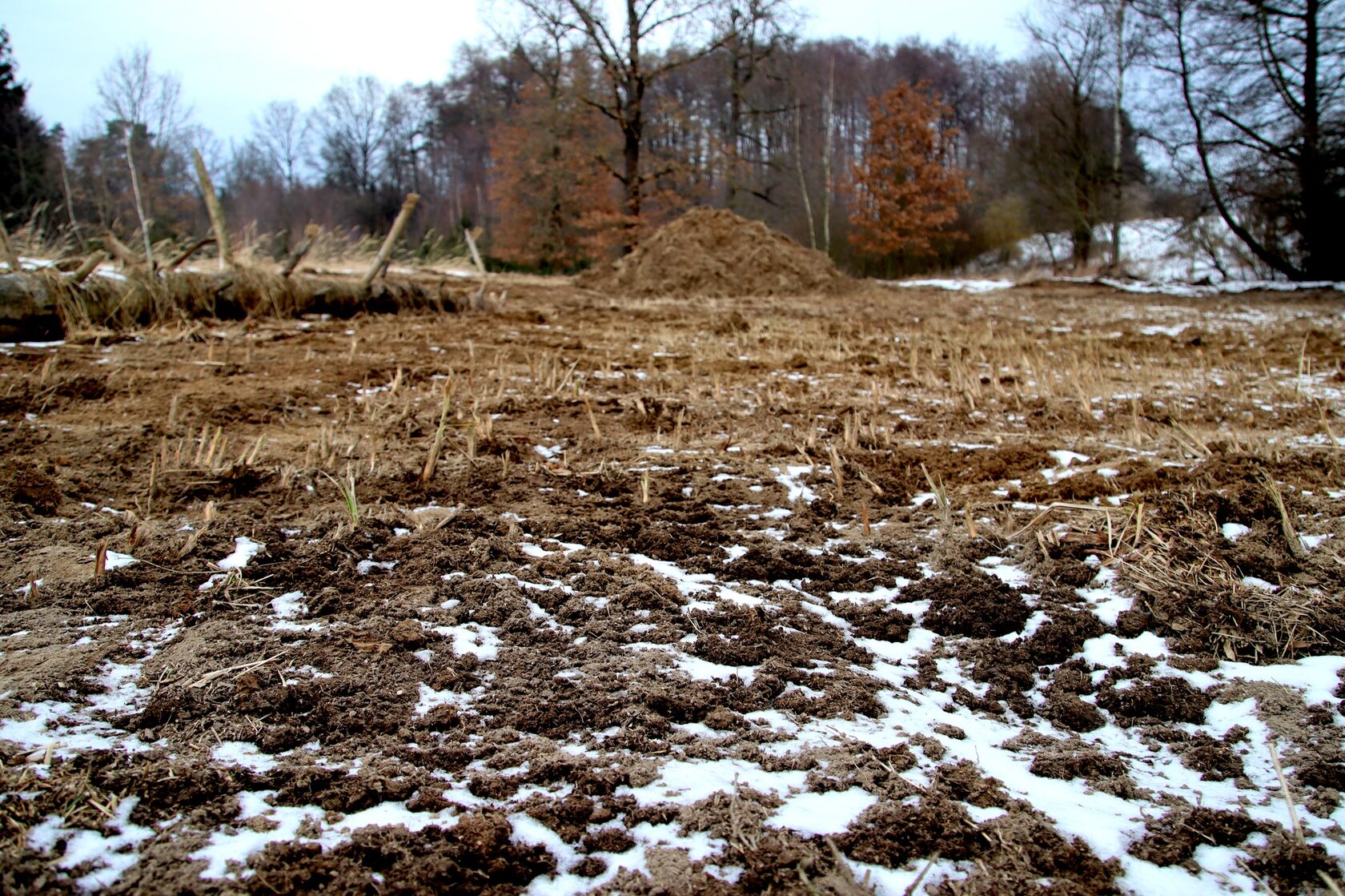More water, more life, more space for biodiversity. That’s what the main phase of the Maříž wetland restoration, which we completed two months ago, has brought. Through extensive earthworks, we created over 300 meters of meandering streams and a number of pools, and we also removed more than a kilometer of land reclamation.
We’re in Czech Canada, on the outskirts of the tiny village of Maříž, not far from the larger and better known town of Slavonice. Right outside the village is a shallow valley made up of wet meadows, stream alders, and a wetland created by beavers only a few years ago. The beavers blocked the embankment through which water drained away.
We’re in Czech Canada, on the outskirts of the tiny village of Maříž, not far from the larger and better known town of Slavonice. Right outside the village is a shallow valley made up of wet meadows, stream alders, and a wetland created by beavers only a few years ago. The beavers blocked the embankment through which water drained away.

“This piece of nature took quite a beating during the communist era. If you want to restore the processes that shape the environment, you have no choice but to actually make bigger interventions. Like in the human body—when it’s ill, treatment and surgery must follow. This was just like an operation,” says ecologist Filip Lysák.
Filip is the author of the entire restoration project and as such was present for the vast majority of the time when the main phase of the project was being implemented. It consisted of extensive earthworks that didn’t involve excavators and lasted several months, and its aim was to use the aforementioned “operation” to set up new conditions and processes on the site so that nature can function properly.


What needed to be done?
During the previous regime, people interwove a large part of the valley with an underground network of pipe drains and drainage channels, all of which were part of the practice of collective farming. This system worked very efficiently and brought agricultural chemicals along with excessive nutrients form the surrounding fields into our area.
Increased eutrophication rates, together with a long-term lack of proper care, have led to the overgrowth and degradation of most of the valuable vegetation, which disappeared either due to the encroachment of trees or expansive species of scrub, sedge, and rush. Moreover, the overgrowth of the highly invasive glandular nettle has been and continues to be a problem in recent years.

What have we done so far?
Melioration – we dug up and removed nearly 800 m of pipe drainage, i.e. a large network of pipes and smaller pens that diverted water from the central part of the meadows. In a similar fashion, we filled in (and removed) over 400 m of drainage ditches—artificially inflated channels in the stream alder and northern part of the site.
Natural streams – where water used to flow away through straightened drainage channels, there are now over 300 meters of new streams. They travel through dozens of small meanders, which, in addition to the original bedrock, have also been filled with sand and gravel in places and supplemented with stumps and other material. This created a wide range of new habitats and microhabitats, i.e. new habitats for a wide range of animal species, as well as an extensive stream system that will not only hold water in place for longer periods, but also effectively clean it before it enters the wetland created by the beaver.






New pools – we created four new large pools (two pools and two earth ponds) with a total area of almost 2,000 m2. The author of the project, Filip Lysák, designed them all to have gently sloping banks and enough “shallows” to offer an ideal habitat for amphibians, aquatic insects, and birds that rely on them. Other tiny pools were created spontaneously in the depressions of the stream alder, where more water began to be retained due to the stoppage of melioration. This entire set of pools and reservoirs complemented the smaller pools that had already been excavated and is now home to many species of amphibians.
Meadow restoration – an important objective, which would have been difficult to achieve without technology, was also the removal of sod on an approx. 1-hectare area. This was actually two complete areas, one in the wetter part of the meadows roughly in the center of the site and the other in the drier part completely to the north of the restored area. In the stands left untended for too long, sodding is an effective tool for getting rid of accumulated nutrients and old growth, and preventing the growth of invasive plants. In essence, it’s a restart that will give the site a chance for valuable flowering plants to regenerate.
The main phase of the restoration included other smaller steps, including the sealing of the embankment that forms a dam in the beaver wetland, or the minor pruning of bushes and trees in order to lighten the area.





What’s next?
The restoration project will continue through 2029 and include a total of six seasons of restoration management. In the first few years, this will consist of intensive hand mowing, enriching the meadows with green hay from species-diverse sites, and removing expansive species. All this is of particular importance in areas where we have stripped the sod and so are prone to overgrowth by undesirable plant species.
In other words, the operation was performed and now it’s necessary to observe the patient closely and set the appropriate care for everything to get healthy.
“The whole point of my work is for nature to adopt what I am doing. When restoration is carried out in the proper way, then in a short while nobody will be able to tell that we’ve done anything at all,” concludes Filip Lysák.
The result of our work now at the site will be carefully measured in future seasons with surveys focused on species diversity (both animal and plant). Just a few months later after completion, we’re pleased to see that the local wildlife is really taking ownership of the restoration.

Project financing
The “Maříž Wetland” restoration project is financed by the European Union and will cost a total of CZK 4,507,758 under the Operational Program Environment.
Other costs, such as biological surveys, monitoring, and ongoing care of the site and the operational costs of the Refugium team were covered by a total donation of CZK 1,000,000 by partners from the private sector, led by the Svoboda & Williams real estate company.


Click here for more detailed information about the restoration project.